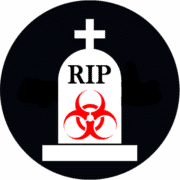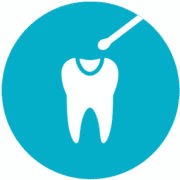If your facility generates a small volume of clinical waste or is located in rural Alaska, you might find that best disposal solution for these materials involves your mailbox. Consider the use of USPS-authorized medical waste mail back systems as a cost effective, compliant, and efficient disposal option for wastes generated at your practice. Through these mail back systems, generators have access to a range of fully compliant solutions which are flexible enough to meet a variety of operational requirements.
In this post, we have included information on the types of clinical wastes that can be disposed of through these mail back solutions, how to utilize a medical waste mail back system, along with relevant regulations governing their use.
What Types of Clinical Wastes Can be Disposed Through Mail Back Systems?
Medical waste return mail disposal systems can be utilized for a variety of clinical wastes. As with regular collection services, wastes must be segregated for disposal in mail back solutions, but may be used for:
- Sharps Waste: Materials include needles, ampules, broken glass, blades, razors, stables, trocars, guide wires, disposable surgical instruments, or any other item that has the potential of puncturing skin.
- Biomedical (Red Bag) Wastes: Materials include potentially infectious materials, blood products, contaminated personal protective equipment and bandages, IV tubing, and cultures.
- Pharmaceutical Waste: This primarily includes wastes which are a chemical waste product, vaccine, or allergenic that does not contain a radioactive component intended for use in the diagnosis, care, mitigation, treatment, or prevention of disease or injury in humans or animals. Certain listed or controlled substances require additional disclosures and management procedures for return mail disposal.
- Amalgam Waste: Amalgam waste is generated through dental activity and contains roughly 50% mercury. Amalgam is used for fillings and can be generated during application or with extracted teeth. Amalgam waste is classified as “Universal Waste” due to the mercury content inherent in this waste stream and while not classified as a hazardous waste, should NOT be disposed via the sanitary sewer or with your general medical wastes due to the presence of mercury.
With proper disclosure to and approval from your service provider, mail back disposal systems can also be used for:
- Pathological Waste: Pathological waste includes human and animal tissues. These wastes must be segregated by the generator and are commonly incinerated for proper treatment.
- Trace Chemotherapy Waste: Materials utilized for chemotherapy treatments which may contain some small residual material from this activity. Materials include empty vials, empty syringes, empty IVs, contaminated gowns, gloves, tubing, aprons, wipes, and packaging. These wastes must be segregated by the generator and then incinerated for proper treatment.
Using Medical Waste Mail Back Disposal Systems
Infectious waste and needles must be strictly and lawfully separated from your standard trash. Infectious waste cannot simply be tossed into the garbage, nor can sharps be discarded in any particular container, as you risk needles poking through.
Instead, the law requires the use of rigid and puncture resistant containers to store and dispose of infectious waste. This ensures proper awareness and safety of anyone who handles it.
Medical waste mail back solutions involve specialized packaging components which meet regulatory requirements set by the Department of Transportation (DOT) and the United States Postal Service (USPS). While Entech’s mail back systems are designed for use through the USPS, some systems are designed for other carriers, most commonly the United Parcel Service (UPS). UPS has their own set of requirements which are different from those issued by USPS, but represent an alternative that is available in some markets.
In regards to container design, the law requires medical waste mail back solutions utilize certified primary waste containers which are rigid, puncture resistant, and sealed to prevent potential exposure in the event of a transportation accident. Systems available through Entech come in a range of sizes and from 1.2 gallons to 28 gallons to meet varying operational requirements.
To meet requirements, mail back kits include the following:
- Instruction sheet for proper use
- Primary collection container for medical wastes
- Heavy interior plastic liner bag (if container does not have sufficient seal on primary container)
- Heavy exterior plastic liner bag to enclose primary collection container
- Zip ties to secure liner bags
- Interior fiberboard enclosure
- Exterior fiberboard shipping box
- Packaging tape to seal system prior to shipment
- Shipping manifest to document proper treatment and disposal
- Prepaid return shipping label
To use a mail back disposal system, the first step is to place an order which will include the cost of the system itself and all associated outbound and return shipping. Systems are then individually packaged, mailed to your location, and ultimately received at your facility for the collection of medical wastes. Once the primary waste container is full, users simply follow the included instruction sheet for proper packaging, complete the included shipping manifest, and provide the sealed package to USPS for return shipping and processing. Of note, system users must save the original shipping box that systems are received in. This same box is used to return full systems for processing.
With Entech’s systems, electronic notifications are sent to system users throughout this process to provide documentation of outbound shipping, return shipping, and the ultimate treatment of wastes.
Mail Back Medical Waste System Requirements for Lawful Disposal
Because of the potential pathogens inherent within the medical waste stream, certified containment systems are a legal requirement of the transportation process. Containers must be rigid and impenetrable, but also meet a series of design requirements. If you cannot locate a USPS authorization number on the exterior packaging of your system, the system has not met these design requirements is not legally compliant with regulations.
Ultimately, the shippers of medical waste bear the legal and financial liabilities associated with the use of non-authorized solutions transported through US mail per federal code established by the USPS and DOT Hazardous Material Regulation. Authorized systems are specifically designed and extensively tested to ensure safety for all who may come in contact with wastes and minimize the potential of exposure during an accident. Use of the US postal system to mail medical waste with non-authorized packaging represents violations of Title 39 U.S.C., Section 3018 and Title 18, U.S.C., Section 1716 (Injurious Articles as Nonmailable). In this occurrence, full responsibility rests with the shipper from placing any nonmailable items into US postal system per US code. Again, shippers bear full liability for violations which can result in substantial fines and even jail time if the shipments result in injuries to other individuals who come in contact with nonmailable items.
Among others requirements, any USPS-authorized return mail system meets the following:
Systems are extensively tested to ensure structural integrity. The USPS requires that a series of tests be completed by a certified testing lab as part of the authorization review process. Required testing is completed to confirm that systems are capable of withstanding the elements, that systems are leakproof, and able to withstand a variety of potential impacts that could be experienced during transportation. Specifically, tests include humidity testing, temperature testing, vibration testing, leakproof testing, and 30 foot drop testing under a variety of different environmental conditions. If a packaging system fails any test (materials leak from the system), it will not be authorized for use.
Systems have multiple containment barriers to ensure protection. To manage exposure potential, medical waste mail back systems consist of multiple nested barriers to seal wastes within packaging. The primary waste collection container will be rigid, impermeable, and also supplied with absorbent material. Secondly, the primary container is itself sealed within a heavy weight plastic liner. These components are then packaged inside of two nested fiberboard boxes as an additional protective measure. This level of design, which will be part of any USPS-authorized system, assures that wastes are contained event of a transportation accident.
Systems require special markings and use of USPS specific programs. In additional to structural requirements, medical waste mail back systems must also meet additional USPS requirements which are specific to their systems. These include specific hazard markings, manifest requirements, and the utilization of USPS’ return mail shipping programs. This is why you will not find any USPS-authorized system sold without pre-paid return shipping included.
As described in this post, the development of USPS-authorized return mail solutions is not a casual process. By using USPS-authorized solutions, medical waste generators are able to ensure that their wastes are properly contained for transportation, liabilities are minimized, and wastes are managed through full compliance in an efficient and cost-effective manner.
Contact Entech for further information on medical waste mail back systems or purchase systems through our online store.







